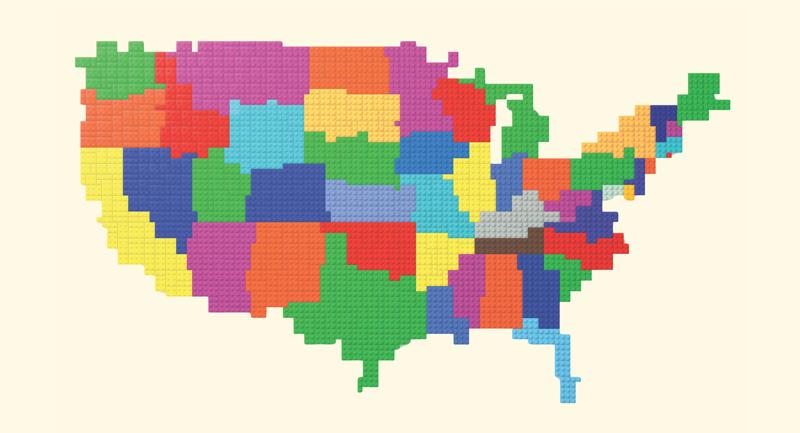September 1, 2020
•
5 min (est.)•
Vol. 78•
No. 1Grading During the Pandemic: A Conversation
While differing on particulars, two experts agree that now's the time to look hard at "broken" grading practices.
Credit: Iza Habur
In this dialogue, two leading advocates of grading reform, Joe Feldman and Douglas Reeves, consider how grading practices and policies could be influenced by the ongoing pandemic and the widespread school closures last spring.
Q: What major grading issues are schools facing as the new school year begins?
Joe Feldman: Every fall, students enter classes with a range of prior knowledge and educational experiences, but this year, the spectrum may be wider than we've ever seen. Last spring, students with more resources and supports were more insulated from the effects of the pandemic, and better able to meaningfully participate in school. Other students—those who had insufficient technology access, who had home responsibilities like caring for younger siblings, or who felt the overwhelming stress of social isolation or a family member losing their job or becoming sick—had their learning essentially placed "on hold." These learning losses likely occurred more frequently among students with fewer economic means and less racial privilege.
We'll need to be more focused on essential content, more explicit about what it takes to earn specific grades, more responsive and strategic with our supports, and more expansive about how and when students can demonstrate what they know. For example, we could revise our tradition of report card grades being final and unalterable, and instead make ways for teachers to update grades when students catch up and demonstrate higher achievement. Some school districts, such as Chicago Public Schools and San Leandro Unified in California, and several districts in Washington state, piloted this idea last spring by assigning students who were unable to show sufficient performance an "Incomplete" until the student could access instruction, receive supports, and demonstrate understanding.
Douglas Reeves: I agree we'll need to select what's most crucial to teach now. Because many students missed three months of school, with only a fraction of the missing learning replaced by online classes, most teachers face the challenge of addressing 12 months of curriculum in a 9-month school year. And that's for students who only required one year of learning in a school year, since they were basically on track; in some schools, students were a year or more behind before the COVID-19 pandemic. NWEA estimates the impact of school closings in the spring of 2020 will range from 30 percent in reading and math to the loss of a full year of learning. Teachers can't address 24–36 months of curriculum in nine months.
Now's the time to finally face the reality that not every academic standard is equal. Schools need a systematic way of establishing priorities for what students need to learn. My own work on "power standards" suggests a remedy. Schools must identify the few standards that provide leverage by applying to multiple disciplines, enduring through several grade levels, and being essential for the next level of learning.
Q: How can schools ensure that grading is equitable and meaningful in this academic year, given the disruptions students have experienced?
JF: First, our grading must be both accurate (so grades describe a student's level of course understanding) and equitable (so we aren't giving an advantage to students who have more resources). For example, we don't want to average a student's performance over time, which—although seemingly an objective calculation—actually hides what students ultimately achieve and makes it harder for students who start further behind to succeed.
Second, let's frame grades not as the end of our instruction and students' learning, but as a guide for future decisions. Equity isn't just offering students equal access to support; it means tailoring our support based on each student's needs. For instance, when we allow retakes, we allow students to succeed even if they start further behind. The "Incomplete" option, used strategically, offers hope to students whose education we know was significantly disrupted and who deserve more time to be as successful as are students whose education was less disrupted. Students anxious about their learning loss will be more motivated to persevere, because high grades are possible despite what they endured.
With so many students having gaps in their learning from last spring, grading can give both us and our students a diagnosis and a prescription of what comes next in their learning.
DR: Education leaders need to remember that some students go home to safe, two-parent homes, filled with books and technology, often supplemented with tutors. Others go home to challenges in housing, food insecurity, medical care, and family support. In some of these homes, success in school might be a lower priority. A commitment to equity means both groups of students have equal access to support, and that success in school doesn't depend upon the conditions of the home—in particular, that a student can achieve academic distinction based on the work they accomplish during the school day.
Providing students sympathy or diminished expectations doesn't answer the challenges of inequity. Providing them engagement, rigorous work, and support during the school day does. Effective grading policies are an essential part of combining rigorous expectations with meaningful feedback. For example, when students were missing assignments during March through June of 2020, giving zeroes for the missing work and then averaging in those zeroes to determine the final grade to give in June of 2020 would be ludicrous. Teachers had to evaluate student performance based on the latest and best evidence that they had available, not the average. Abandoning the average is not only a good practice during school closures, but should be part of grading reforms when students return to classrooms. In any learning environment, evaluation of student work should be based on their latest and best evidence.
Q: What best practices can teachers use to ensure their grading is tied to evidence of learning but isn't punitive, given students' individual circumstances?
DR: Schools must clearly define the purpose of grading. In my judgment, the purpose is neither punishment nor reward; it is to provide accurate feedback in order to improve the performance of students and teachers. This means, among other things, that grades focus on academic proficiency, not behavior, compliance, or other nonacademic attributes. It means discarding the practices of averaging all of a student's grades into one (the frequent default of electronic grading programs) and eliminating the mathematical distortions involved in the 100-point scale.
Accurate feedback rests not solely on a grade, but on explicit descriptions of the learning needs of students. For example, if a student receives a failing grade, we owe that student and his parents an explanation of what was missing. Did he really fail the entire term? Many schools are addressing learning deficiencies during the recent shutdown by identifying specific missing work—a paper, project, or lab—that a student can make up in this fall to avoid the frustration and even expense of repeating an entire course.
JF: I agree about excluding nonacademic attributes or behaviors. To ensure grades accurately reflect student learning and don't perpetuate achievement disparities, we must be more deliberate about what knowledge and skills are essential for each course, and explicitly describe what students must demonstrate to achieve each level of mastery (A–F) against those standards. At the same time, we should be more intentional about excluding from grades criteria that can perpetuate inequities. Traditionally, most teachers include in the grade things like extra-credit assignments and performance on homework. Let's clearly recognize that both these things are highly dependent on a student's home environment and resources. Including them makes grading less equitable.
Q: Is Pass/Fail grading a good practice to use as students try to make up lost learning?
JF: Last spring, most of us struggled to teach while managing our own stress from shelter-in-place restrictions and the economic and health effects of the pandemic. Most schools chose not to award letter grades during fourth quarter or second semester. They humbly and empathetically realized that it would've been impossible to give grades that accurately described students' understanding of course content while our instruction was so compromised. Anything other than grading Pass/Fail/Incomplete would've made grades both inaccurate and inequitable.
Some districts chose a hybrid model of allowing students to choose whether to receive a letter grade or a Pass/Fail grade. Although this policy might seem neutral and "hold harmless" on its face, this "choice" of letter grades was in effect disproportionately available to students with more resources. In other words, the policy actually perpetuated disparities by creating a two-tiered system of grades—letters (presumably As and Bs) for those who could succeed during the pandemic, and non-letters for those who were more susceptible to its disruptive impact.
This fall, although "school" still isn't like it was, we have more experience in how to adapt our instruction and supports (including tutoring or health and counseling services) to mitigate disparities outside the school. I'm not sure I'd support using Pass/Fail once schools reopen, but—assuming the impact of the pandemic continues through the fall—we don't want students to fail because of circumstances outside their control. If we're confident that we can be accurate and equitable, letter grades are worth using—but if we're in doubt, we should normalize our use of the Incomplete grade, which accepts that our struggling students need more time and supports, but that everyone can ultimately succeed.
DR: I disagree, especially for secondary students. While Pass/Fail or Incomplete grades might have merit for elementary school, this approach can lead to devastating inequities for secondary school students. In a Pass/Fail system, or other systems used in spring 2020 in which every student was awarded an A, there was no distinction between students earning As and those earning Ds. So for economically disadvantaged students who depend on high grades to qualify for scholarships for postsecondary education, Pass/Fail grades deprive them of the chance to compete for scarce scholarship dollars, and dramatically reduce the probability that they will have access to college or technical school. That is a path to inequity with lifelong consequences.
Q: So what should the pandemic teach us about grading policies and practices going forward?
JF: In deciding how to grade students in the fourth quarter of last school year, we began to recognize how our traditional grading practices often perpetuate external disparities. Educators must continue this critical examination to ensure that our grading aligns with, and doesn't undermine, our commitment to high-quality, equitable education.
DR: The pandemic should teach us what we already should have known: Many grading systems are broken. When these systems rely on antiquated, inaccurate, and unfair practices, such as the average and using the 100-point scale, then we systematically put students at a disadvantage—not only during extended school absences caused by this pandemic, but throughout their educational experiences. Now is the time to learn these lessons and make changes.
End Notes
•1 Kuhfeld, M., & Tarasawa, B. (2020). The COVID-19 slide: What summer learning loss can tell us about the potential impact of school closures on student academic achievement. The Collaborative for Student Growth, NWEA.
•









